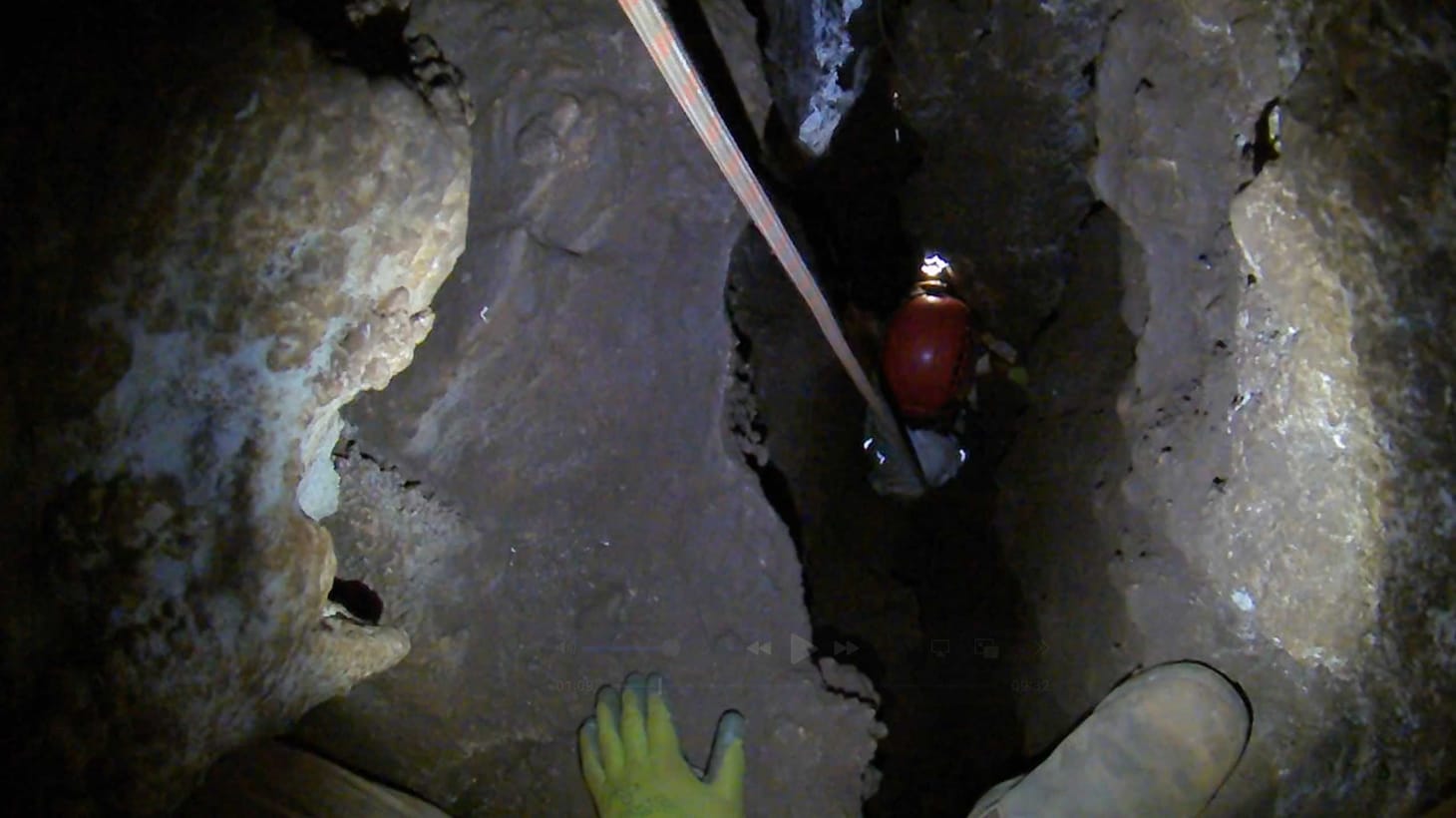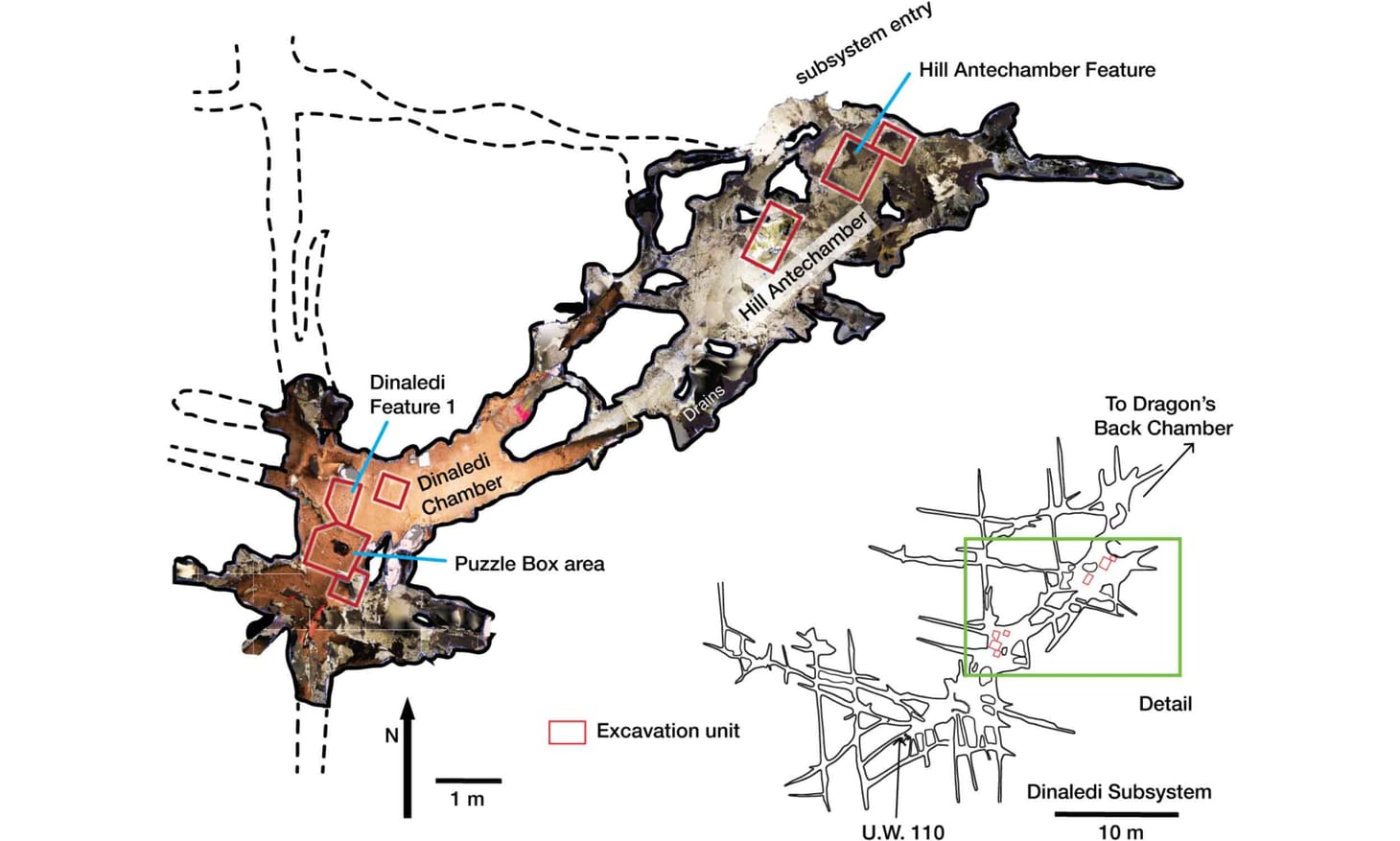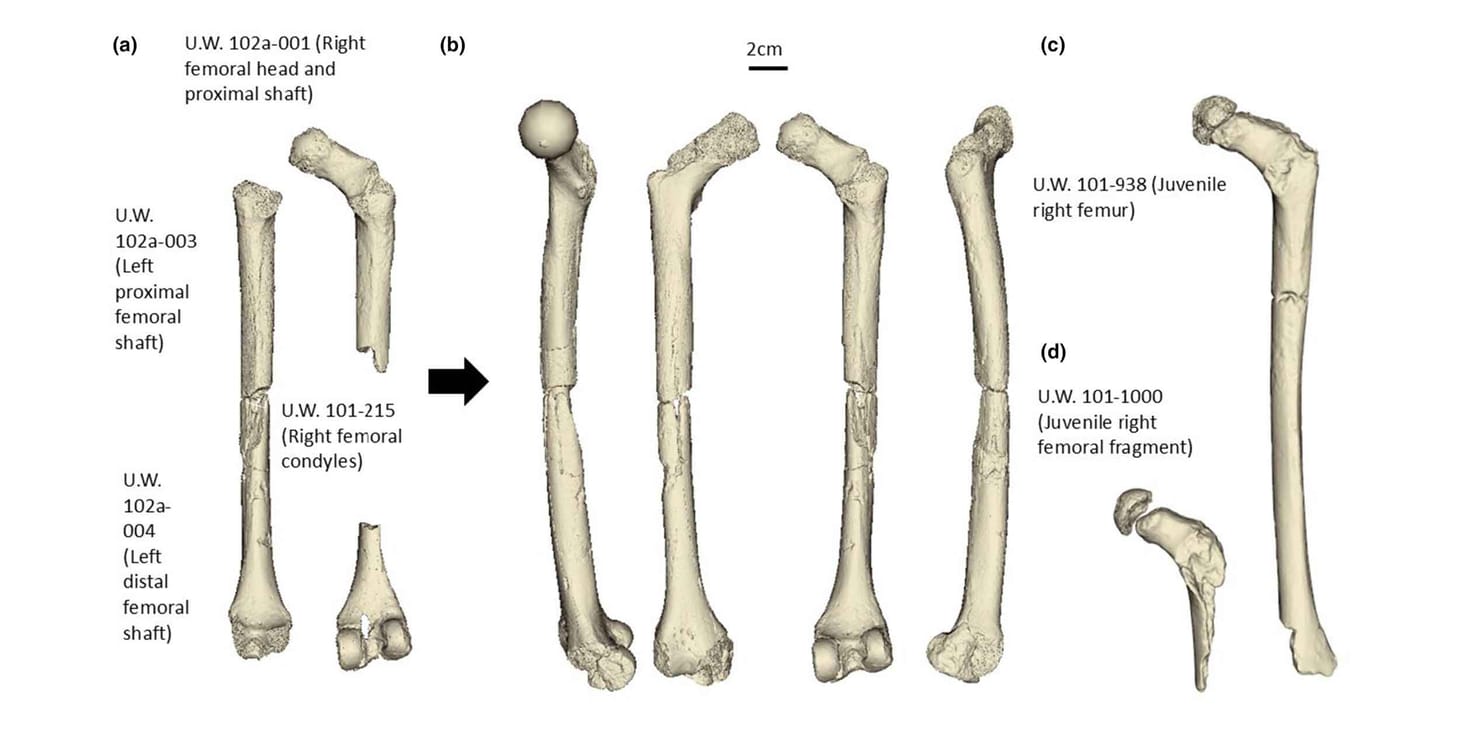Fossil profile: U.W. 101-258 and humeral torsion
A humerus from the Dinaledi Chamber gives some insight into the behavior of Homo naledi.

The upper limbs of humans are different from those of living great apes in many ways, but one way in which they are fairly similar is the orientation of the humeral head. Your shoulders are at the side of your body, and they angle just slightly forward. If an arm is bearing your body weight, usually because you’re climbing something, it is in front of your body or overhead. Your arm also bears weight when you carry things, usually at the side of your body or in front. The humeral head is the arm component of the shoulder joint, and it is shaped roughly like a half-sphere. That spherical surface points into the shoulder joint. In anatomical terms, it points superoposteromedially, which is to say, it points up, back, and toward the body. The measurement of this angulation, which is a bit complicated, is known as “humeral torsion”.
Great apes move pretty differently from humans. They not only climb, they spend more time suspended with arms extended straight upward. Chimpanzees and gorillas spend much more time on the ground, and their knuckle-walking requires the humerus to support the body’s weight quadrupedally. Still, their humeral head has much the same orientation as ours. The range of weight support and motion of the humerus are similar, even though the pattern of locomotion is different.
What’s odd, then, is that the humerus anatomy of our fossil relatives looks different from both humans and living great apes. Their humeral heads face more posteriorly, more toward the back. This is known as “low humeral torsion”. Australopithecus humeri all have low torsion. So do Homo erectus humeri. The same is also true of gibbons, the small apes of southeast Asia and Indonesia. They have extremely long humeri with joints that face more toward the back than in larger apes or humans.
One of the known humeri of Homo naledi is the most extreme example. The humeral head of this individual faced almost directly backward. We have at least two other humerus fossils of H. naledi where the direction of the humeral head can be examined, and neither of them is quite this extreme. H. naledi is not alone. Where we can measure the humerus, Australopithecus, Homo erectus and even little Homo floresiensis all have humeral heads that face more toward the back than today’s people or great apes.
The most well-supported explanation for this is that the great apes and today’s humans have similar humerus anatomy for different reasons. With great apes, using the arms to support their weight above large branches or on the ground makes a more medially positioned humeral head make sense. With humans, it’s different. We have shoulders positioned more toward the side, and pointing less upward, and we use our arms for throwing, toolmaking, and carrying and pulling. We don’t climb nearly as much as great apes. Somehow, our pattern of arm use ends up favoring a similar humeral torsion as great apes. Our extinct relatives didn’t knuckle-walk, and we think they climbed more than today’s humans. Their humerus seems to have evolved to solve a different problem than ours, and the low humeral torsion is one sign of that.
John Hawks Newsletter
Join the newsletter to receive the latest updates in your inbox.



